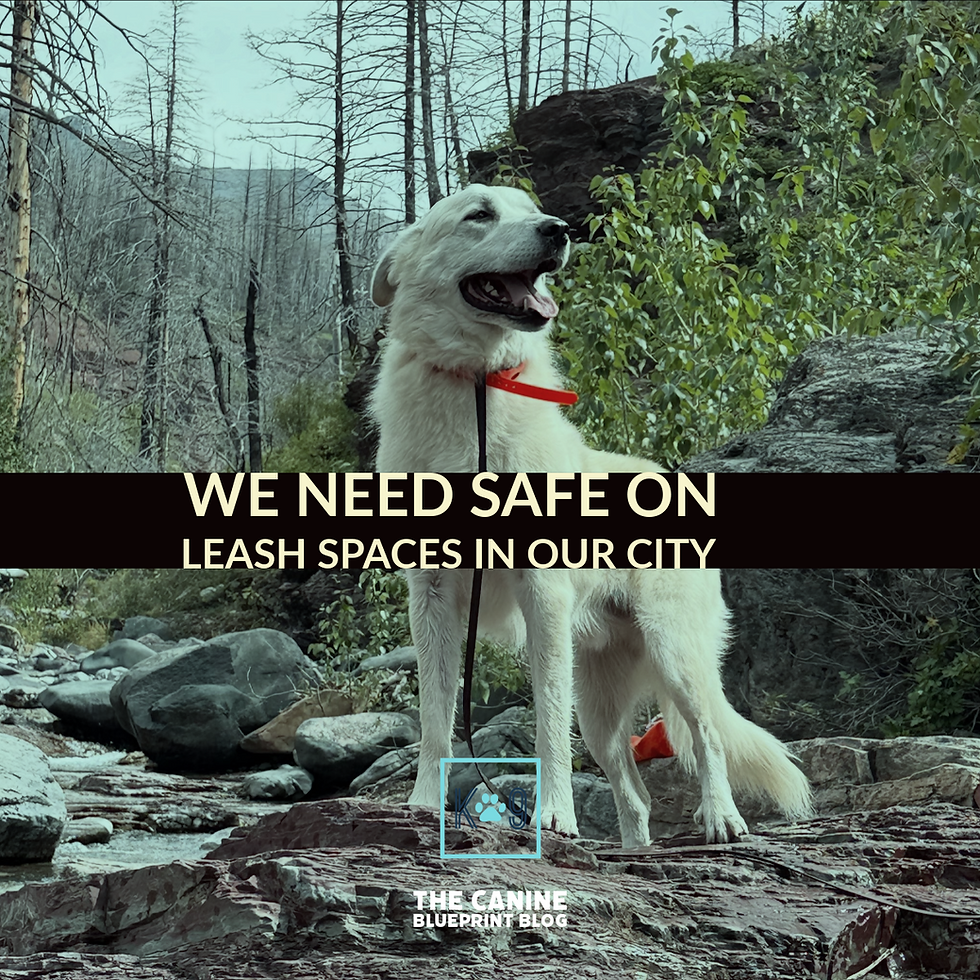Why Crate Training Matters—for Your Dog, Your Home, and Your Pet Care Professionals
- jenna sooley

- Jul 23
- 3 min read

When you bring a dog into your life, you’re signing up for more than just cuddles, walks, and playtime—you’re also taking on the responsibility of helping them feel safe and secure in a world that can sometimes feel overwhelming. One of the most powerful tools for creating that sense of safety is the crate.
Yet, many pet owners either skip crate training entirely or stop using the crate once their dog seems “good enough” without it. Unfortunately, this can create challenges not only for you, but also for anyone who helps care for your dog—whether that’s a trainer, groomer, vet, or boarding facility.
Let’s talk about why crate training is so important, and how it impacts the professionals who support you and your pup.
Crate Training Is About Comfort, Not Confinement
At its core, a crate is meant to be a den-like space—a place where your dog can relax and feel safe. When introduced properly, dogs naturally enjoy having a quiet retreat where they won’t be disturbed. It can:
✅ Reduce anxiety in new or stressful environments
✅ Provide a safe space during travel or at the vet
✅ Prevent destructive habits while your dog is unsupervised
✅ Help with potty training in young or new dogs
The key is making the crate a positive experience, not a punishment. A crate-trained dog doesn’t see it as a “jail”—they see it as their space.
Many owners stop using a crate when their dog grows up or seems well-behaved. While this can work in a stable home environment, it often backfires when circumstances change:
Emergencies happen. If you ever need your dog crated for travel, vet care, or an unexpected situation, a dog who isn’t used to it may panic.
Reverting behavior. Even a well-trained dog can regress in a new place or with new caregivers. Without a crate, stress can lead to accidents, destruction, or reactivity.
Loss of structure. Some dogs actually thrive on the structure a crate provides. Removing it can create insecurity or over-attachment.
So while it may seem like “graduating from the crate” is a milestone, it’s better to maintain at least some level of comfort with it throughout your dog’s life.
How It Impacts Pet Care Professionals:
When your dog isn’t crate-trained—or hasn’t been crated in a long time—it affects everyone who works with your dog.
Boarding facilities: Dogs who panic in crates are at risk of injuring themselves or stressing out the entire kennel environment. Staff have to spend extra time calming them, and your dog may not eat, rest, or settle well.
Groomers & vets: Many grooming salons and vet clinics use crates or kennels for safety while your dog waits their turn. A dog who isn’t used to confinement may bark, cry, or even hurt themselves trying to escape.
Trainers: Crate training is often part of behavior modification programs, especially for reactivity or anxiety. Without crate comfort, progress can be slower and more stressful for your dog.
Pet sitters & walkers: If there’s an emergency (like a gas leak or injury), having a dog who can calmly stay in a crate can literally be life-saving.
When your dog is crate-trained, it’s easier for professionals to keep them safe, calm, and happy, which makes the experience smoother for everyone.
Even if your dog no longer “needs” a crate daily, it’s wise to maintain crate comfort throughout their life.
Occasionally feed meals in the crate.
Let them nap there with the door open.
Practice short crate sessions every now and then, especially before boarding or vet visits.
Use it for travel or quiet time, so it stays part of their routine.
This way, if you ever need the crate again, your dog won’t see it as something unfamiliar or scary.
Crate training isn’t about locking your dog away—it’s about giving them a safe, predictable space to relax. And beyond your own home, it’s an essential skill that allows your dog to handle travel, boarding, vet visits, and grooming with far less stress.
When you stop crate use entirely, it doesn’t just affect you—it affects every professional who helps care for your dog. Keeping the crate in your dog’s life, even in small ways, sets them up for a lifetime of confidence and security.
So if you’ve let the crate collect dust in the corner, consider bringing it back into rotation—you’ll be doing both your dog and your pet care team a huge favor.



Comments